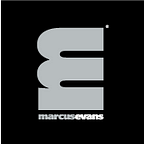Getting Future Ready:
Embracing Business Challenges with Sound Human Capital Management Practices
Human Capital Management (HCM) is fundamental to the functioning of any business. Without employees, a company would not exist, thus they aid in defining the culture and processes at the heart of it. In a global study by Universum (2015), 43% of CEOs said their financial results in the last 2 years were below expectations due to poor HCM practices. In this webinar from November 2016, our presenters give us an insight into the ways businesses can embrace these challenges and prepare for the future.
The first webinar presenter is Chandru Pingali, founder and managing director at ICube, who has had experience in the banking, IT and pharmaceutical fields, to name a few. Chandru is joined by Manish Bundhun, Chief Human Resources (HR) Executive at Rogers, who helps people grow and realize their potential, whilst also covering more than 4500 employees over 12 countries.
Chandru (pictured left) begins by explaining the importance of HCM, and its role in managing people and the processes within an organization. HCM is equated with HR functional capability, and HR professionals allow the business leaders to deliver the HCM strategies. In order to build a robust HCM, the three stages are: diagnosis, consisting of surveys or focus groups, reporting of the findings, and lastly implementation, which involves measuring the desired outcome over a certain time period. However, what this basic strategy does not allow for is co-creation. This is where the ICube experience changes a step. How? By innovating to use co-creation, which allows technological enabled solutions. The process is shortened from a few weeks to 24 hours.
In order to develop and understand HCM, the Pentagon model (pictured above) is used as base. At the foundation of this model are 5 dimensions: attract & retain, measure performance, reward, build capability, and institutionalise process & culture. What the HCM diagnosis must reveal is status, business focus, culture, direction and future measurement.
The ICE CUBE Human Capital Diagnostic tool was developed at ICube, and it uses the power of the pentagon model to specify business solutions for business leaders and HR leaders. Manish (pictured left) illustrates the process using the case study of a medium sized Mauritian based Aviation company, who need to reinvent its business model and move towards a more technology based one. Taking us through the various stages of the process, we begin by looking at the organisations ‘selfie’: the diagnostic or make-up of the firm. The analysis looks at the firms’ capability, in relation to its effectiveness, allowing weaker areas to be highlighted. For a deeper analysis, an action scorecard is created to allow the key takeaway points to be discussed in a post-diagnostics workshop. This allows strengths to be displayed and focuses energies on the areas that need to be worked on.
Listening to these professionals in the field discussing a very relevant topic is something that not only professionals in the field need to understand, but also upcoming generations. The workplace is an ever-changing environment, thus using the models that have been presented in the webinar, we can gain a more in depth insight into the way in which businesses can channel their efforts.
